- Home
-
About Us
The medium environment is your loyal partner
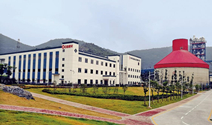
- News&Press
The medium environment is your loyal partner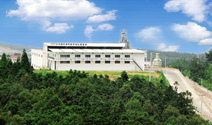
- Achievements
The medium environment is your loyal partner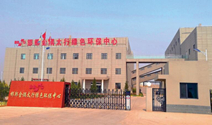
- Business
The medium environment is your loyal partner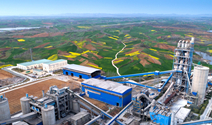
- HR
The medium environment is your loyal partner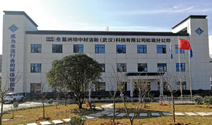
- Contact Us
The medium environment is your loyal partner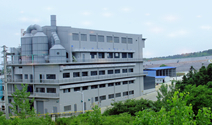 Technical achievementsCement kiln co-processing municipal solid waste
Technical achievementsCement kiln co-processing municipal solid wasteThis technology applies the achievement of "11th five-year plan" national key technology R&D program. Taking of the technique of "refinement disposal", and integrating waste pre-treatment, kitchen waste fermentation of organic compounds, sewage treatment technology, and so on, on basis of existing new dry process cement kiln. Using the incineration system of cement production and the raw material grinding system to carry out targeted coordinated disposal of domestic waste. This technology can both eliminate the impact on cement kiln production process because of domestic waste composition fluctuation and ensure that different components of domestic waste can be destroyed completely. There is no residue elimination in the disposal process, the quality of cement kiln product and pollution emission meet the requirement of the current standard in our country.
Application
Municipal solid waste disposal has become a topic of social concern. The disposal of domestic waste change from the initial landfill and compost to the present incineration, melting gasification and comprehensive utilization. And the disposal target has been gradually changed from "harmless and decrement " to " reclamation and intensiveness ".
For the current situation that domestic waste disposal is difficult, Sinoma International Environmental Engineering Co., Ltd (hereinafter referred to as: Sinoma International) propose for the first time in domestic using new dry process cement kiln to dispose municipal solid waste. It provides a new effective way for domestic waste disposal. This technology integrates many years of scientific research experience and many patent proprietary technologies, it is the municipal solid waste pre-treatment technology that is suitable for diverse disposal processes. This technology can not only improve the quality and efficiency of composting, fermentation and gasification, but also can combine with cement, heating, thermal power and other industries to eliminate the pollution of municipal solid waste. This technique is particularly suited for the new dry cement plant distributed in urban peripheral region, it can not only dispose of municipal solid waste, but also dispose of some combustible solid waste. In addition, the disposal of waste will not adversely affect the operation of the cement incineration system and the quality of cement clinker and will not cause secondary pollution.
Technique Principle
It is necessary to preprocess the municipal domestic waste by co-processing in new dry process cement kiln. The municipal solid waste is separated into the combustible part and the non-combustible part to substitute fuels and materials respectively in cement production. The components are analyzed and controlled to achieve maximum acceptance requirements. There are four parts in the technique such as the pretreatment of domestic waste, the disposal of kitchen waste, alternative fuels and sewage. To meet the discharge standards, sewage is treated by private facilities or local municipal sewage treatment system jointly based on COD, BOD and disposal situation of sewage.
1. The Pretreatment of Domestic Waste
The domestic waste is transported by the sanitation department to the discharge pit in the pretreatment workshop. Then it will be fed into the chain conveyer by the grab or the transport system of heavy plate feeder installed at the bottom of the discharge pit. Next the garbage will be fed to the rotary screen by the chain conveyer for fragmentation, dispersion and sieving in addition to some large pieces of garbage or construction waste to be separated for special treatment. There are large pieces of plastic, box, sticks, kitchen waste, fabric, and plant in the screen overflow, and small pieces of muck, fragments of glass ceramics, kitchen waste and plastic in the screen underflow. As the alternative fuels, the lighter from the screen overflow such as plastic, paper, leaves and so on will be separated by the air separator after the magnetic separator. The heavier separated by the air separator such as box, fabric, plant, sticks and large-grained kitchen waste, will be mix with the screen underflow after coarse crushing. Then they will be sent to the second rotary screen with smaller aperture. The screen underflow separated by the second rotary screen will be separated for small pieces of plastic by another air separator. Then the plastic will be sent to the fuel disposal procedure with the screen overflow separated by the second rotary screen and the lighter separated by the two air separators respectively. The muck and the kitchen waste after the gravitational vibration separation will be sent to kitchen waste disposal procedure, and the heavy stone, tile, ceramic, glass and concrete fragments will be sent to the raw material processing system of cement production.
2. Kitchen Waste Disposal and Control Technology
There two options to dispose kitchen waste according to the ingredients. If the ingredients of kitchen waste such as K, Na, S, Cl have influences on the cement production but are not in high levels, the kitchen waste will be mixed with the intermediate product in cement production and extruded together to be the substitute materials. On the contrary, the kitchen waste with high levels of interference ingredients will be sent for fermentation treatment and the flammable gas from the process will be sprayed into the firing system. The remaining residue can be used as compost or substitute materials. In the fermentation treatment, the kitchen waste after crush will be sent into the gravity settlement fermentor with active bacteria. Partial leachate produced during fermentation will be sprayed back into the fermentor, and the surplus will be sent to the collection and treatment system of sewerage. Some of the residue from the fermentor will be mixed with fresh kitchen waste and returned to the fermentor to accelerate the fermentation.
3. Alternative fuel processing and control technology.
The combustible separated from domestic waste in the pretreatment workshop or other combustible solid waste is transferred to the combustible treatment workshop. After coarse crushing, magnetic separation, fine crushing and metering , the waste will be sent to the alternative fuel burner of kiln hood as alternative fuel for cement production.
Features
1. To ensure household waste is completely digested, through the pre-treatment, use different disposal techniques to handle the waste with different components.
2. An efficient pre-treatment system that can maximize the resource of household waste by the equipment, such as bag broken drum sieve, magnetic separator, air separator and density separator.
3. The alternative fuel handling technology can not only dispose the combustibles in household waste like plastic, paper, leaves and fabrics, but also dispose the flammable solid waste generated by other activities.
4. The cement clinker burning system has some advantages including high processing temperature (the temperature of solid material is up to 1450 ℃~1550 ℃, the gas temperature is up to 1700 ℃~1800 ℃), long residence time (the residence time of solid material is about 35min, the residence time of gas above 950 ℃ is about 12s, and when it above 1300 ℃ the residence time of gas is more than 3s), stable incineration process, disposal without waste and the clinker can solidify heavy metals in waste. It can be completely digested the waste in burning system in case it produces a secondary pollution.
5. The operation in the garbage pre-treatment workshop are closed to reduce the proliferation of odour. The control room is equipped with advanced automatic control system so that the operator can monitor the entire process and real-time operating parameters of each device through the computer.
Technical Parameters
Contents
Parameters
Processing materials
Household garbage, flammable solid waste *
Capacity (t/d) **
200~400 (2500t/d clinker production line, household waste)
500~800 (5000t/d clinker production line, household waste)
Equipment ***
RTS rotary screen
DGS gravity separator
PSS air separator
DRS double-axis rotary shear crusher (rough crush)
SCG single-axis shear crusher (fine crush)
PSF alternative fuel pneumatic ejector
NC alternative fuel burner
* The disposal capacity of combustible solid waste should be determined base on the heat value and water content of the waste and the size of the burning system.
** Specific garbage disposal capacity should be determined by the composition of household waste.
*** All of them are the production of China Sinoma International Engineering Co., Ltd. Other equipment for transportation and measurement are available from the appropriate manufacturer.
Friendship link: China timber stock China timber internationalCopyright:中材国际环境工程(北京)有限公司ICP:京ICP备11045707号-1 - News&Press
